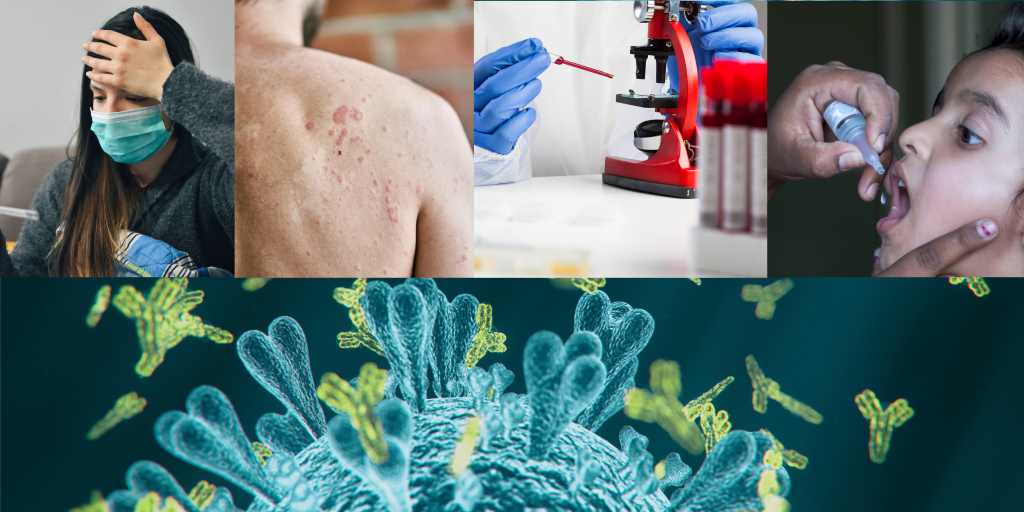Communicable Disease Fax Line
(804) 862-6294
__________________________________
Emergency After-Hours Call Number
(866)-531-3068
__________________________________
District Epidemiologist
Katrina Saphrey, MPH, CIC
Office: 804-609-5775
__________________________________
Deputy District Epidemiologist
Eboni Bassett, MPH
Office: 804-609-5794
Epidemiology is the study of the distribution and determinants of disease in a population. Public health epidemiologists monitor the health and illness of a population, investigate the factors that affect the community's health, and recommend interventions to reduce the risk of disease. Epidemiology is practiced in health departments daily and involves principles of surveillance, investigation, laboratory testing, data management and communication. Generally, our team handles the following:
Clinical Epidemiology: Healthcare-associated Infections, Antimicrobial Resistance, Tuberculosis, Newcomer Health...
Disease Prevention: HIV/AIDS Programs, STDs, Viral Hepatitis...
Immunization: Vaccines for Children, School Requirements, Vaccine Safety, Influenza, Travel...
Informatics and Information Services: Meaningful Use, electronic reporting...
Surveillance & Investigation: Influenza Surveillance, Disease Surveillance Data, Zoonotic Disease...
Online Resources
Office of Epidemiology
Home page for VDH’s Office of Epidemiology. It will connect you with the Divisions of Surveillance and Investigation, Disease Prevention, Environmental Epidemiology, Immunization and Radiological Health.
Disease Regulation Information
Contains the complete regulations for disease reporting and control for Virginia. You will also find the reportable disease list, conditions reportable by laboratories, outbreak reporting requirements and the reporting form (Epi-1).
Disease Fact Sheets
Contains all of VDH's disease fact sheets. From head lice to whooping cough to West Nile Virus, this is the first stop for quick, reliable disease information. Fact sheets are also available here in Spanish.
Communicable Disease Chart for Schools
Direct link to the PDF. Make sure to review the footnotes at the bottom of this document. Last revised November 1st, 2011. More information can be found in the VDOE School Health Guidelines (located at the bottom of the page).
Nursing Facility Regulations
Contains a line list of guidelines from VDH’s Office of Licensure and Certification. The Rules and Regulations for the Licensure of Nursing Facilities in Virginia can be found here.
VDSS Assisted Living Facility Regulations
Contains information on regulations, Code of Virginia, application process, guidelines, forms, training and more.
Successful Strategies for Infection Prevention & Control This toolkit contains infection prevention presentations, resources, and tools that have been adapted for the assisted living facility (ALF) and nursing home (NH) setting whenever possible. Much of the tools like infection prevention guidance, fact sheets and surveillance logs, however, are generally applicable to other settings.
EPA Registered Disinfectants
Contains listings of EPA registered antimicrobial products that are effective against HIV, Hepatitis B and C, Norovirus, MRSA and more.
FDA Bad Bug Book
Provides basic facts regarding foodborne pathogens and natural toxins
CDC Health Alert Network
Provides recent and archived health alerts, advisories, updates and informational messages regarding vital health information.


